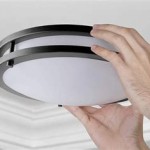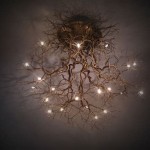Essential Aspects of Wire Colors in a Ceiling Fan with Light
Understanding the wire colors in a ceiling fan with light is essential for safe and successful installation. These colors indicate the purpose of each wire, ensuring proper electrical connections and preventing accidents. This article explores the crucial aspects of wire colors in ceiling fans with lights, providing a comprehensive guide for home improvement enthusiasts and skilled electricians alike.
###Ground Wire (Green or Bare Copper)
The ground wire serves as a safety feature, providing a low-resistance path for electrical current to flow to the ground in the event of a short circuit or fault. It is typically green or bare copper and should be connected to the green or bare copper ground screw on the ceiling fan mounting bracket.
###Neutral Wire (White)
The neutral wire provides a return path for electrical current to complete the circuit, connecting from the ceiling fan switch or electrical box to the neutral terminal on the ceiling fan. It is typically white and should be capped with a white wire nut.
###Hot Wire (Black or Red)
The hot wire carries electrical current from the power source to the ceiling fan motor and light fixture. It is typically black or red and should be capped with a black or red wire nut after connecting to the appropriate terminals on the ceiling fan.
###Light Wire (Blue or Yellow)
The light wire provides power to the light fixture on the ceiling fan. It is typically blue or yellow and should be connected to the light terminal on the ceiling fan and capped with a blue or yellow wire nut.
###Switch Loop Wire (Black, Red, or Blue Connected to Black)
The switch loop wire controls the fan's speed settings and light operation from the wall switch. It is typically black, red, or blue and connects to the corresponding black wire in the ceiling fan's electrical box.
###Understanding Wire Gauge and Terminal Connections
In addition to color coding, understanding wire gauge and proper terminal connections is crucial. Wire gauge indicates the thickness and current-carrying capacity of the wire, with lower gauge numbers indicating thicker wires. Terminal connections should be secure and tight to prevent overheating and electrical hazards.
###Conclusion
Grasping the essential aspects of wire colors in a ceiling fan with light empowers individuals to safely and efficiently install these fixtures. By adhering to these guidelines, home improvement enthusiasts and electricians can ensure proper electrical connections, preventing accidents, and enhancing the functionality of their ceiling fans.

Wiring A Ceiling Fan And Light With Diagrams Ptr

How To Wire A Ceiling Fan Temecula Handyman

Wiring A Ceiling Fan And Light With Diagrams Ptr

Wiring A Ceiling Fan And Light With Diagrams Ptr

Wiring A Ceiling Fan And Light With Diagrams Ptr

Wiring A Ceiling Fan And Light With Diagrams Ptr

How To Wire A Ceiling Fan Control Using Dimmer Switch

Ceiling Fan Wiring Diagram

How To Wire A Ceiling Fan Temecula Handyman

How To Wire A Ceiling Fan Temecula Handyman
Related Posts








